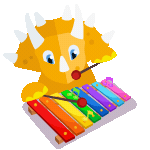Swahili for Kids: Language, Culture, and Coastal Life
Language and geography are deeply connected, especially in cultures with long histories like the Swahili. Stretching along the eastern coast of Africa, the Swahili people have developed a rich cultural identity influenced by language, religion, and global trade. Understanding how geography has shaped their traditions helps children appreciate the diversity of life across the world.
Where Is Swahili Spoken?
The Swahili language, also known as Kiswahili, is spoken across a wide area of East Africa. It is a Bantu language used by many different ethnic groups who live along the coastline of the Mozambique Channel—from northern Kenya through Tanzania and down to northern Mozambique. Variations of Swahili are also spoken on the Comoros Islands and parts of Somalia. This makes it one of the most widespread languages in Africa.
From Arabic Script to Latin Letters
Swahili has a unique linguistic history. Originally, it was written in Arabic script due to the influence of Muslim traders and settlers from the Arabian Peninsula. Later, when Christian missionaries and colonial governments came to the region, they introduced the Latin alphabet. Today, Swahili is written in Latin letters, making it easier for children around the world to learn it.
Religion and Daily Life
Islam arrived on the East African coast around 1012 AD, brought by Persian and Arab traders. Over time, Islam became a major part of Swahili identity. Today, many Swahili people practice Islam, and this influences daily life, from what people eat to how they dress.
One example is the tradition of Madrassa, a school where children study the Quran and learn Arabic. These schools teach both religious and cultural values. For many Swahili families, attending Madrassa is an important part of childhood.
Weddings and Family Traditions
Marriage is a central tradition in Swahili culture. While marriages were once arranged by parents, modern Swahili girls and boys now often have a say in who they marry. Wedding celebrations are big community events, usually lasting several days with music, dancing, and traditional ceremonies. Only men are allowed inside the mosque for the religious wedding vows, but the entire community participates in the celebration.
Learn More with Dinolingo
Children who are curious about other cultures can explore Swahili through Dinolingo, an award-winning platform that teaches over 50 languages to kids ages 2–14. With games, songs, videos, and printable materials, Dinolingo helps kids learn Swahili in a fun and engaging way. The platform works on web, iOS, and Android, includes offline content, and features a parent dashboard and gamified rewards system.
Final Thoughts
The Swahili language and culture are shaped by the history, religion, and geography of East Africa. From the shores of the Indian Ocean to the lively streets of coastal cities, Swahili traditions are full of meaning. Learning about this culture gives children a better understanding of the world and inspires curiosity about how other people live, speak, and celebrate.
Start Learning a New Language Today!
Best Language App for Kids.
7-day free trial. Then only $19/month. Cancel anytime.
